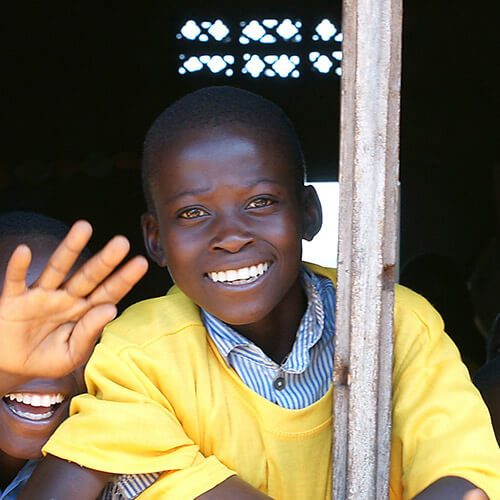Please Mind the Gap
Just like my fellow volunteer Ariel, I was also convinced by my friend Adam into joining WomenatthecentrE’s Courtwatch initiative. It didn’t take much coaxing, however, for me to realize how great of an opportunity this was to help out in the community, particularly at the grassroots level. I am a recent graduate from the University of Miami with a psychology degree, also having minored in sociology. Although I do not have much background with the issue of domestic violence, I felt compelled to participate due to the extremely unfortunate reality that this matter is so prevalent in our society but lacks much mainstream attention. This was a chance for me to learn first-hand how the Ontario Criminal Justice system works and to observe how efficiently it resolves domestic violence cases. Unfortunately, however, I have come to witness that often the opposite seems true – I have not seen an efficient process at all, but rather a series of various “to be continued…” cases.
I would like to focus on a particular example of one of those cases that I sat in on…
Court was running about 30-45 minutes late. I believe it was due to the fact that the victim was still recording her video statement. Video statements, sometimes called “KGB” statements (from the Supreme Court Decision – R vs. B (K.G.)) are taken by police as soon as possible after a victim reports a crime. These can be invaluable in Domestic Violence trials; as in domestic situations, feelings of fear, dependency, cultural/family pressure, love, etc. may quickly change over time, as well as how a victim may tell the events of a crime. Recording videotaped statements soon after the crime has taken place is designed so that there is a record of the most accurate statements possible.
Before the victim entered the room, the accused was brought in handcuffed, and seated off to the side. Afterwards, as the victim entered the courtroom and proceeded towards the stand, I noticed that she looked particularly distraught, clearly avoiding any eye contact with the accused. A description of the case was announced – it was a continuing matter, one of sexual assault, where the accused held a knife to the victim.
The victim’s story goes like this (let’s call her Sophie)…
The two had met in 2007 at Cocaine Anonymous. The accused (let’s call him Joe) apparently tried hitting on her from the get-go, but for about a year Sophie said she kept denying his advances, mainly because she did not want to be in any sort of relationship at the time. However, on one Sunday afternoon, after church, she agreed to go out to lunch with Joe – marking the beginning of a tumultuous 2-year relationship between the two.
Apparently, throughout those 2 years, Sophie said that Joe was an extremely jealous and controlling boyfriend. He only ever “allowed” her to have female sponsors and always wanted to know what Sophie was doing whenever he wasn’t around, constantly calling/texting her. Sophie finally ended the relationship in 2009 and claimed to only have reached out to Joe a few times afterwards to make sure he hadn’t relapsed. However, Joe didn’t seem to take the breakup too seriously – Sophie said that he kept on contacting her, even after she told him to stop, repeatedly. She moved apartments a total of 5 times in order to lose touch with him.
As it goes with many controlling relationships, it didn’t seem as though Sophie could completely cut all ties with Joe. When her mother died a horrible death, ironically also a victim of domestic violence, Sophie sought Joe for help – she asked him if she could store some of her mother’s belongings at his house. The day that the crime took place, Sophie went to Joe’s house alone to drop off some things. When he let her in, he began questioning her about her whereabouts – “my friends told me they saw you with ‘who-knows-who’ having coffee, etc. etc.” – making Sophie extremely uncomfortable. After she expressed this to him, she attempted to leave through the front door, but Joe allegedly blocked her way. She then headed to the back door, but he beat her to it, not allowing her to leave until she explained why she was out having coffee with “who-knows-who”. Sophie then reached for her cellphone but Joe immediately grabbed it and smashed it on the floor. When the argument got even more heated, Sophie said that Joe forced her to the ground and got on top of her. To try to defend herself, Sophie grabbed the nearest chair and tried to hit him with it, but to no avail. Joe then held a knife to her neck, calling her various provocative names and threatening her life, and proceeded to punch her in the head several times until she was temporarily knocked unconscious.
After she came to, Joe then forced Sophie into his bedroom, forced himself on her and sexually assaulted her.
Now, at this point into the hearing, you can only imagine how tense the courtroom was. It seemed like the trial had reached its climax. It was clearly a very emotional experience for the victim, and even for myself as a listener. Then the judge decided that it was time for a quick break, so everyone had to leave the courtroom for a little while. Remember how I said earlier that these cases seem to all be series of various “to be continued…” events? Well, once we went back into the courtroom after break, it was the same judge residing over an entirely new case. Where had the victim and the accused gone? When would this case be continued/completed? How was it possible for questioning to become so intense and then come to an abrupt halt? This led me to think most importantly, what could the victim be feeling right now? I can’t imagine what it must feel like to come to this point in the trial and then leaving to go home, without any sort of closure…
There are a few observations that I made throughout this hearing that I would like to point out. Everyone involved in the hearing, except for the accused, was female, including the judge. Throughout the victim’s testimony, the accused was being quite disruptive – he kept shaking his head and making loud “tsk tsk” noises, clearly frustrated with what the victim was saying. It became so overwhelming that at one point, the Crown stopped questioning the victim and turned to him and asked him if he could calm down and wait for his turn. The judge, recognizing the disruption, offered the accused a piece of paper to “express his concerns.” Albeit a little quieter, he was still obviously disgruntled by the victim’s accusations. Even for an objective observer, this was disruptive and distracting behavior, so I can only imagine what it felt like for the victim trying to testify.
The victim managed to hold herself together even in the face of all this harassment. We cannot forget this is a woman whose mother had been murdered by her intimate partner, which I imagine would make her that much more vulnerable. Of course, she broke down in tears when she was discussing her mother’s death.
This case, among many others, is a clear example as to why the criminal justice system is flawed – taking into account the extreme emotional toll that domestic violence has on victims, it seems very counter-productive to allow these cases to have such abrupt gaps and large intervals between hearings. Anything can happen within the time that the victim tells their story to when the verdict is made. Feelings change, situations change. The goal of the Courtwatch program is to ultimately help ensure the ongoing safety of those who find themselves in threatening and abusive relationships. We are hopeful that by continuing to observe and understand how the system is being carried out, we can help victims regain a sense of control over their lives and redeem faith and trust in a confusing, and often scary, judicial system.
– Sana








